Flowers are known to be fragrant, brightly hued, and smooth in texture. But sometimes, in contrast, flowers can be a little coarse too, yet bewilder us with their phenomenal beauty. Buzzle tells you about the eryngium plant and its varieties, which is one such kind.
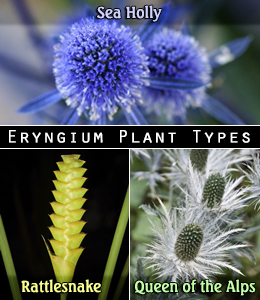
Stealthily!Miss Willmott , a gardener in the 19th century, was known to drop the seeds of eryngium giganteum in the gardens of other people without their knowledge. She did this in an attempt to include these flowers in the gardens which didn't have them.The eryngium plant and its many varieties belong to the Apiaceae family, also believed to be similar to the Parsley family. They are abundantly found in the region of South America. They are both perennial and annual plants. The leaves are remarkable, and have a spike-like feature, similar to a thistle-like appearance. The flowers are also uniquely shaped, and resemble domes. These make great ornamental plants, and are extensively cultivated to meet their growing demand. In the bygone era, the plant has been known for its remedial and medicinal qualities. It has been cultured into many hybrids as well. Some species of the plant are also used as condiments and food.
In the following sections, we shall take a closer look at some of the well-known varieties of eryngium.Eryngium maritimum
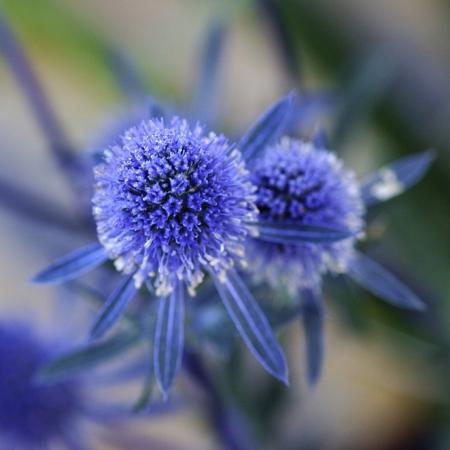
Uses and SignificanceThe roots and leaves of this plant are edible. The root system is used in the process of erosion control measure. The color-rich flowers and leaves of the plant are used in many beautification endeavors, like the floral crowns. It has been known to help in the cure of chronic cough and also kidney stones. The shoots are blanched and cooked. It is sweet to taste, and has an aroma which is similar to that of carrots.
Geographical Spread
This plant variety may be found in many countries where the conditions match its growth requirements. But, quite strikingly, it is one of the endangered species. Found in Europe and Africa, it is stated to be one of the rarest of flowers, and can be found in areas like sand dunes, marshes, and wet lowlands.
Common Names
The flower is famous by many different names, some of which are Sea Holly, Eryngo, Cardoon, Sea Hulver, Sea Holme, Eryngium Planum, Eryngium Maritimum, Blue Glitter, and Blue Hobbit. The flowers can be in varying shades of blue. One of the overtly famous blue hue can be seen in Blue Sapphire. The leaves also demonstrate a bluish tinge.
How to Cultivate
It grows well near the sea coasts. The plant has to be grown from the seeds. The area should be rich in light and the soil needs to be dry and sandy. This is mandatory, because the tree is known to grow only in sea habitats. It requires moderate water supply, and can withstand brief dryness.Eryngium aquaticum
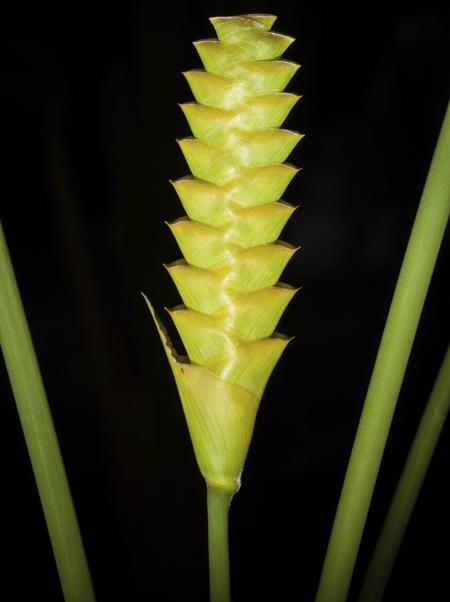
Uses and SignificanceIt is one of the most commercially cultivated flower types. It doesn't appear to be edible, though it also belongs to the carrot family. The plant is known to be an antidote for snake poison. It is also helpful in the cure for fever.
Geographical Spread
This plant found in freshwater areas and marshy lands which are exposed to excessive sunlight. It abounds in Florida, Mississippi, and New York. Most of the species of this plant are native to the US. But there are some which were introduced in Canada from other locations.
Common Names
The most famous names that it has garnered is the Corn Snake Root, Marsh Rattlesnake Master, Marsh Eryngo, Yuccaleaf Eryngo, Eryngium Yuccifolium, and Buttonsnake Root. The plant is known by its silvery-white flowers that bloom in mid-summer. It also bears blue and purple flowers. However, the silvery white variety is more commonly seen.
How to Cultivate
The plant is known to grow in dry and hot regions. But it is not tolerant to dry soil conditions. It requires a regular, steady water supply. It is propagated through seeds. The soil it prefers is sandy and loamy. It needs organic supply and requires acidic soil.Eryngium alpinum
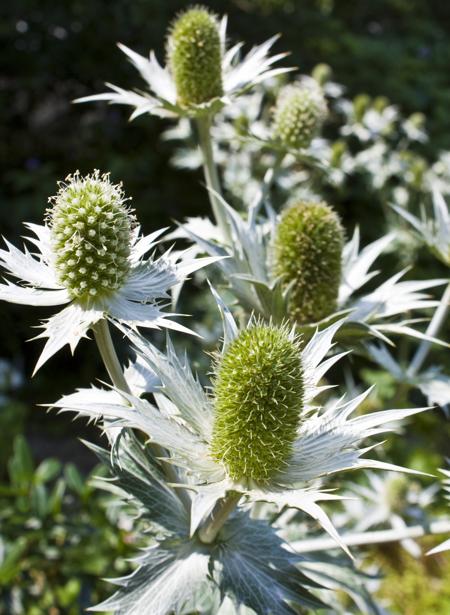
Uses and SignificanceThis type is vastly recognized as an ornamental plant. It makes good garden borders and garden beds. When dried, the flowers look amazing, and could be used in various decorations. The plant has blue or white flowers.
Geographical Spread
This variety is native to Austria. France, Italy, and Switzerland. This blue flower plant is reducing in numbers, considerably.
Common Names
There are many common names given to this flower type depending on the location and the inhabitants. Some of the names worth listing here are Alpine Eryngo, Alpine Sea Holly, and Queen of the Alps.
How to Cultivate
This variety requires full sun, while the soil can be moderately fertile, but needs to be well-drained. It is propagated by seeds, which need to be sown once fertile.Eryngium giganteum
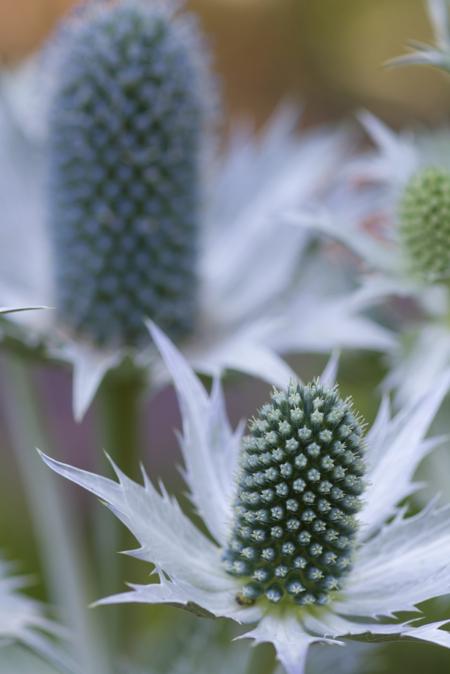
Uses and SignificanceLike most varieties of eryngium, this variety too is used extensively for decorations, given its eye-appealing features. One noteworthy use is in the making of dry flower arrangements.
Geographical Spread
This variety has most prevalence in Caucasus and Iran.
Common Names
This plant has several interesting names in its possession. Some are Silver Ghost, Miss Willmott's Ghost, and Tall Eryngo. The flowers are a shade of green, which turn to a beautiful shade of blue with time.
How to Cultivate
This plant needs bare minimum growing conditions. It requires full exposure to sun, and grows in dry and arid conditions. The soil need not be fertile. It's been known to grow in poor soil conditions as well. It needs to be protected from the winter winds, to which it may succumb. It grows from seeds and root cuttings too.Eryngium foetidum
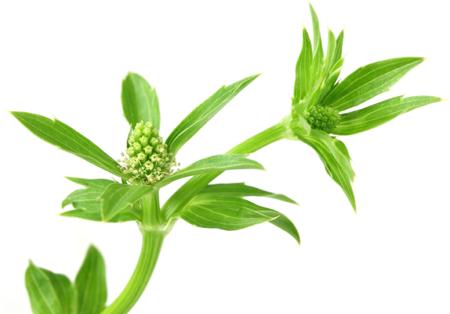
Uses and SignificanceIt's a vital source of essential oil. The plant makes an excellent culinary herb, and thus, finds its place as a necessary flavoring ingredient. It is also used as a spice in many countries of Asia and also the Caribbean. The uses are not limited only to the kitchen. Like other plants of this family, it is used as a medicine, and is renowned for its anti-inflammatory properties. It is considered good for stomach ailments too. It is heavily cultivated in Central America, and is one of the top export-plants of the region.
Geographical Spread
This plant has its base scattered in many parts of the globe. It mostly thrives in tropical climate. It is found abundantly in the Amazon rain forests of South America.
Common Names
Its immense popularity has earned it diverse names. Some of the most commonly used names are Mexican Coriander, Java Culantro, Saw Leaf Herb, Fitweed, Recao, besides others. The plant can be easily recognized by the pungent aroma it emits. It bears white fruits which are round.
How to Cultivate
This type has to be grown in areas which are frost-free. It requires high moisture, cool temperature, rich, moist soil, with good drainage. It makes a great choice as houseplants, and you can have them grown in tiny containers too.Eryngium plant varieties are known for their diverse colors, and are also known to add a spark to gardens of all types. They require basic criteria to complement their growth, and can prove to be very rewarding to gardeners in many aspects.






 Stealthily!Miss Willmott , a gardener in the 19th century, was known to drop the seeds of eryngium giganteum in the gardens of other people without their knowledge. She did this in an attempt to include these flowers in the gardens which didn't have them.The eryngium plant and its many varieties belong to the Apiaceae family, also believed to be similar to the Parsley family. They are abundantly found in the region of South America. They are both perennial and annual plants. The leaves are remarkable, and have a spike-like feature, similar to a thistle-like appearance. The flowers are also uniquely shaped, and resemble domes. These make great ornamental plants, and are extensively cultivated to meet their growing demand. In the bygone era, the plant has been known for its remedial and medicinal qualities. It has been cultured into many hybrids as well. Some species of the plant are also used as condiments and food.
Stealthily!Miss Willmott , a gardener in the 19th century, was known to drop the seeds of eryngium giganteum in the gardens of other people without their knowledge. She did this in an attempt to include these flowers in the gardens which didn't have them.The eryngium plant and its many varieties belong to the Apiaceae family, also believed to be similar to the Parsley family. They are abundantly found in the region of South America. They are both perennial and annual plants. The leaves are remarkable, and have a spike-like feature, similar to a thistle-like appearance. The flowers are also uniquely shaped, and resemble domes. These make great ornamental plants, and are extensively cultivated to meet their growing demand. In the bygone era, the plant has been known for its remedial and medicinal qualities. It has been cultured into many hybrids as well. Some species of the plant are also used as condiments and food. Uses and SignificanceThe roots and leaves of this plant are edible. The root system is used in the process of erosion control measure. The color-rich flowers and leaves of the plant are used in many beautification endeavors, like the floral crowns. It has been known to help in the cure of chronic cough and also kidney stones. The shoots are blanched and cooked. It is sweet to taste, and has an aroma which is similar to that of carrots.Geographical Spread
Uses and SignificanceThe roots and leaves of this plant are edible. The root system is used in the process of erosion control measure. The color-rich flowers and leaves of the plant are used in many beautification endeavors, like the floral crowns. It has been known to help in the cure of chronic cough and also kidney stones. The shoots are blanched and cooked. It is sweet to taste, and has an aroma which is similar to that of carrots.Geographical Spread Uses and SignificanceIt is one of the most commercially cultivated flower types. It doesn't appear to be edible, though it also belongs to the carrot family. The plant is known to be an antidote for snake poison. It is also helpful in the cure for fever.Geographical Spread
Uses and SignificanceIt is one of the most commercially cultivated flower types. It doesn't appear to be edible, though it also belongs to the carrot family. The plant is known to be an antidote for snake poison. It is also helpful in the cure for fever.Geographical Spread Uses and SignificanceThis type is vastly recognized as an ornamental plant. It makes good garden borders and garden beds. When dried, the flowers look amazing, and could be used in various decorations. The plant has blue or white flowers.Geographical Spread
Uses and SignificanceThis type is vastly recognized as an ornamental plant. It makes good garden borders and garden beds. When dried, the flowers look amazing, and could be used in various decorations. The plant has blue or white flowers.Geographical Spread Uses and SignificanceLike most varieties of eryngium, this variety too is used extensively for decorations, given its eye-appealing features. One noteworthy use is in the making of dry flower arrangements.Geographical Spread
Uses and SignificanceLike most varieties of eryngium, this variety too is used extensively for decorations, given its eye-appealing features. One noteworthy use is in the making of dry flower arrangements.Geographical Spread Uses and SignificanceIt's a vital source of essential oil. The plant makes an excellent culinary herb, and thus, finds its place as a necessary flavoring ingredient. It is also used as a spice in many countries of Asia and also the Caribbean. The uses are not limited only to the kitchen. Like other plants of this family, it is used as a medicine, and is renowned for its anti-inflammatory properties. It is considered good for stomach ailments too. It is heavily cultivated in Central America, and is one of the top export-plants of the region.Geographical Spread
Uses and SignificanceIt's a vital source of essential oil. The plant makes an excellent culinary herb, and thus, finds its place as a necessary flavoring ingredient. It is also used as a spice in many countries of Asia and also the Caribbean. The uses are not limited only to the kitchen. Like other plants of this family, it is used as a medicine, and is renowned for its anti-inflammatory properties. It is considered good for stomach ailments too. It is heavily cultivated in Central America, and is one of the top export-plants of the region.Geographical Spread